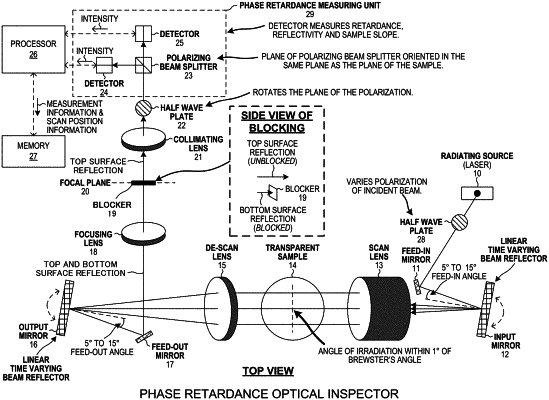| CPC G01N 21/8806 (2013.01) [G01N 2021/8809 (2013.01); G01N 2021/8845 (2013.01); G01N 2021/8848 (2013.01)] | 21 Claims |

|
1. An optical scanning system, comprising:
a first radiating source capable of outputting a first source light beam;
a second radiating source capable of outputting a second source light beam, wherein the optical scanning system causes one of the first source light beam or the second source light beam to be directed towards a sample at an incident angle;
a first time-varying beam reflector configured to direct the first source light beam and the second source light beam toward the sample;
a scan lens configured to focus the first source light beam and the second source light beam reflected by the first time-varying beam reflector onto the sample;
a compound ellipsoidal collector configured to direct light scattered from the sample toward a scattered radiation detector;
a de-scan lens that is configured to output a de-scanned light beam, wherein the de-scanned light beam is created by focusing light reflected from the sample, and wherein the de-scan lens is located approximately one focal length of the de-scan lens from an irradiation location where the first source light beam or second source light beam irradiates the sample;
a focusing lens that is configured to output a focused light beam, wherein the focused light beam is created by focusing the de-scanned light beam output by the de-scan lens;
a polarizing beam splitter that is configured to be irradiated by at least a portion of the focused light beam; and
a first detector that is configured to be irradiated by at least a portion of the collimated light beam that is not reflected by the polarizing beam splitter.
|